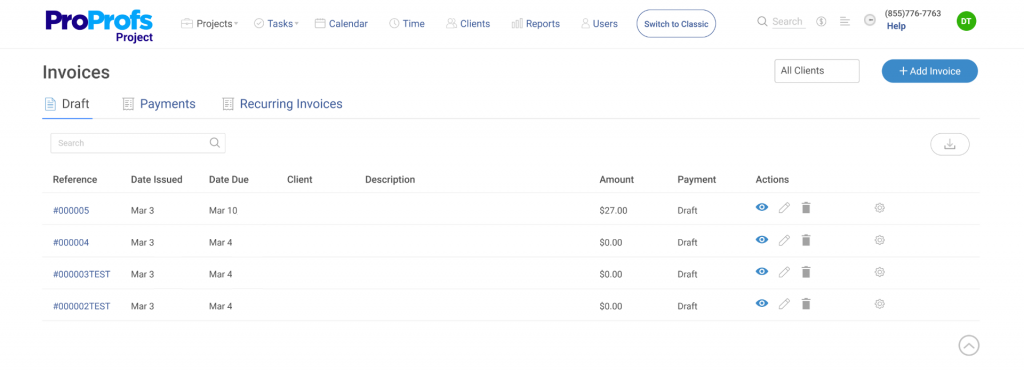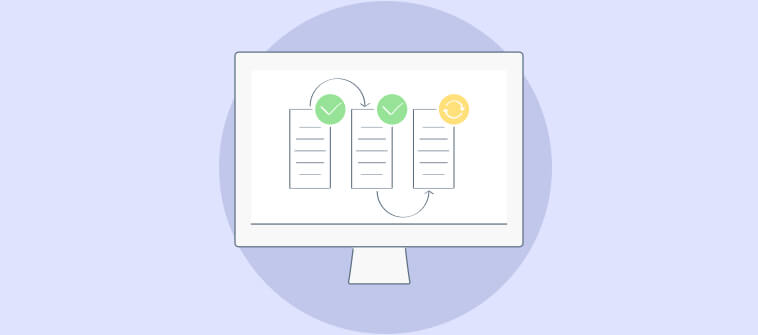Are you tired of consistently exceeding your budget and dealing with inaccurate project cost estimates that hinder your performance?
Don’t worry. You’re not alone!
A project budget is one of the most important elements of any project, and rightfully so. A well-planned project budget accurately and effortlessly takes your execution from good to great.
But why are so many projects never completed within the budget?
Trying to keep your project on a budget can be challenging, especially when many factors can contribute to your projects exceeding budget. Understanding the need to accommodate funds for the unexpected and developing a contingency plan can help avoid frequent budget overruns.
In this blog post, we’ll cover everything you need to know about project budgeting, from how to create a project budget to managing expenses and everything in between.
So let’s dive in!
What Is a Project Budget?
The project budget is an essential document that estimates the total costs of all project activities and tasks throughout the project’s life cycle. It is crucial to help project managers ensure that their projects are accomplished on time and within budget.
Accurately estimating project costs requires relevant project data input and is integral to successful project execution. Thus, creating a project budget involves cost management which involves considering various factors, such as labor costs, equipment acquisition, and operating costs.
Note that the project budget is not a static document. The budget should be reviewed regularly and adjusted as changes occur in real-time. This ensures that project managers can track the project’s progress and adjust the budget to ensure the project remains on track to completion.
What Does a Project Budget Include?
A project budget is an estimate of the total costs required to complete a project successfully.
The budget for a project depends on the type of project, the project’s objectives, the resources needed, and the timelines involved.
Generally, a project budget includes the following:

- Personnel costs: These are the costs associated with the people involved in the project, such as salaries and training.
- Equipment costs: This includes the cost of any equipment or tools required to complete the project.
- Contingency funds: It is common to include a contingency fund in the project budget to cover unexpected costs or overruns.
- Overhead expenses: Overhead expenses include any indirect costs associated with the project, such as office rent, utilities, and administrative support.
So what is a characteristic of a successful budget?
A successful project is defined by the following 3 outcomes:
- A clear cost performance baseline
- Established project funding requirements
- Real-time project life cycle updates
Why Do You Need a Project Budget?
Change is a good thing, right? Well, not always. And when you’re managing a project that is cruising at a 100mph speed with the windows rolled down, then change is definitely the last thing you need.
Still not convinced why you need a project budget for all project proposals?
Simply put, to stay ahead of the curve.
If you don’t have a well-structured process for identifying and reacting to changes, your project will fail in its goals and objectives. The project budget allows you to estimate the total cost of delivering your project and acts as a guide to adhere to while executing the project.
Now let’s dive deeper and understand why exactly you need a project budget.
You need a project budget to:
Estimate Project Costs
Estimating project costs is determining an approximate cost of all the expenses associated with a project, including shipping new equipment, utilizing manpower, and reviewing deliverables. Creating a cost estimate is critical to avoiding cost overruns and delays, and requires consideration of all project variables.
Establish Project Funding
A project budget estimate provides a ballpark figure of the costs that will be incurred to complete a project. This figure indicates to stakeholders the necessary budget for completing project execution and allows them to decide whether the existing project is feasible or not. Thus, reaching the closest estimate of the total project cost becomes essential to secure project funding.
Control Project Costs
If your projects frequently exceed their initial cost projections, it’s likely due to a lack of comprehensive project budgeting. A well-planned budget provides the basis for controlling project costs. It ensures that you clearly understand your project’s financial requirements and can make informed decisions to prevent cost overruns.
Prioritize Projects
Organizations that adopt active prioritization have proven to deliver 40% more value. This is because project prioritization lets you align resources to projects that require immediate execution, ensuring their success. On the other hand, poor prioritization leads to repetitive project failure and, ultimately, missed long-term revenue goal.
Read More: A Quick Guide: How to Prioritize Tasks
Do you know leaders and managers follow proven approaches for creating a project budget easily?
Using approaches for creating project estimates provides a structured and systematic method for determining project costs, ensuring accurate and reliable estimations.
Let’s take a look at them.
Approaches to Estimating a Project Budget
Here are a few project budget management methods used to estimate project costs.
Bottom-up Estimation
With the bottom-up estimating approach, you figure out how much each resource, equipment, or project material will cost. It requires the identification of each discrete activity required to complete the project. This approach is best to go ahead with when the fine details of a project are well-defined.
This method is based on direct input from experts implementing the complete project. For each activity, the resources and the time duration required to complete the activity are estimated. These estimates are then added up to arrive at a detailed cost projection.
Top-down Estimation
Top-down estimating is implemented when a cost or time duration attribute is imposed on a project. It is practical for the initial stage of strategic decision-making and in situations where the information required to develop accurate duration and cost estimates is not available in the project’s initial phase.
This approach works well when there’s a clear insight into the details of a project, and tasks start with identifying the project goal or final deliverable and breaking it down into smaller planning chunks.
Analogous Estimation
This estimating technique is based on expert decisions and accurate information based on similar projects implemented in the past. This information is considered roughly a 20% leeway for the existing project.
This method provides a firm basis for accurate cost estimation if previous information is available. This cost approximation is done with minor variations or customization to allocate duration and costs according to the present project.
Parametric Estimation
Parametric estimating uses defined parameters by which a project can be measured to build a specific project deliverable. A reasonable amount of robust data is required to make this technique easily accessible.
This approach uses arithmetic means based on historical data and project parameters similar to the current project to calculate its duration and costs. This technique is apt for when the environment is stable.
Each approach has its unique features that make it fit for various situations. Identify the right project budget management technique as per your project’s budget and costs.
Now that you’re familiar with the various approaches to creating a project budget, let’s delve into how to create a project budget next. Let’s go!
7 Simple Steps to Create an Effective Project Budget

All set to create a project budget?
We’ve discussed all the components to create the master budget for your next project proposal below.
Here’s the simple way to start creating the budget step-by-step.
1. Leverage Historical Data & Precedents
Looking back at budget lessons learned from similar projects is a great way to get a headstart on building your project budget. A simple summation of successes and mistakes provides a clear path that leads to more accurate estimates.
Evaluate whether previous budget plans were effective or if costs exceeded projections midway through the project. Additionally, consider Key Performance Indicators (KPIs) to gain performance-related insights that can inform your budgeting decisions.
2. Break down the Project into Tasks
The next step is to define individual tasks and estimate the costs associated with each deliverable. These tasks may include data collection, accounting, design, or other activities based on the project’s goals and objectives. By breaking down the project into specific tasks and estimating the costs of each, you can develop a more accurate and detailed project budget.
You can leverage a simple project management tool such as ProProfs Project to define clear-cut tasks.
Watch this quick video to learn how to add tasks to a project.
3. Add Your Estimates Together
Resources are crucial at every stage of project execution, and a comprehensive cost calculation is essential for project success.
After estimating the costs of individual tasks, the next step is to add up the established estimates of all tasks to arrive at a total project cost. It is essential to ensure that the cost estimate is detailed and includes every small cost you believe will be incurred to complete the project.
4. Define & Revise the Project Budget
After cost estimation, it’s time to baseline the project budget. The baseline defines your original project estimates. This baseline is a reference point for measuring progress and determining if the project is “under budget.”
However, it is essential to revise the budget as needed to accommodate real-time changes in schedule, costs, or deliverable content. This process involves updating or modifying the budget to ensure it remains accurate and reflects the project’s current status.
5. Confirm Accuracy
Confirming the accuracy of a project budget is no cakewalk, as a budget involves many dynamic aspects.
The accuracy of cost budgeting relies on the precision of the initial estimates and subsequent project baseline. Consulting with experts with hands-on experience in budgeting can be beneficial in ensuring the accuracy of the budget. By confirming the budget’s accuracy, you can establish a solid foundation for project success.
6. Add Contingency & Taxes
The project execution process can be unpredictable. To account for unforeseen expenses, it’s a good idea to include contingencies and taxes when creating a project budget. This includes cost increases in materials, resource unavailability, design changes, and other events that may impact the budget.
A general rule of thumb is to set aside 10% of the final budget as a contingency fund to cover unforeseen expenses. Additionally, companies must factor in taxes such as VAT to recover taxes and avoid cost overruns. By accounting for contingencies and taxes during the project budgeting process, you can establish a more accurate and reliable budget, minimizing the risk of unexpected expenses and delays.
7. Review & Revisit
Project budget tracking is crucial to ensure that a project is accomplished within its dedicated budget. Note that estimates during the initial stages of a project can be wide, but as the project progresses, a clearer understanding of the costs should emerge.
It’s important to track and document any real-time project changes to prevent budget deviation. Review the budget regularly to adjust estimates and proactively address concerns before they become significant problems.
That’s it! Follow the 7 steps mentioned above to help you put the finances together and build a sound foundation for project budgeting.
Automating Project Budget Creation
“Managing a project budget,” isn’t that the most dreaded task for you as a project manager?
But guess what? We know exactly what will save you time and effort.
Yes, automation!
Using a tool such as ProProfs Project for budget automation can help simplify project budgeting for you.
Let’s see how it works.
Below is what the “Add-ons” icon looks like using a ProProfs account:

To access the Add-ons menu, click on your profile logo and select Add-ons from the dropdown.

You can enable Invoices, Estimates, and Expenses in the Add-ons menu.

Next, for setting up estimates, go back to your Add-ons dropdown menu, then click +Add Estimate.

Enter the details, and click on Save.

There you go! Automating the budgeting process by setting up project estimates will be as easy as a cakewalk!

Things to Consider When Making a Project Budget
To ensure that the budgeting process runs smoothly, there are certain things that are often overlooked.
Take a look.
Effort Estimation
Effort estimation is one of the most omitted factors while drafting project budgets in the early stages of the project development cycle. Effort can be measured in terms of the hours worked by each team member or the payment required for the work done. With accurate effort estimation, project managers can create more realistic budgets and ensure that resources are allocated effectively, leading to successful project outcomes.
Risk Assessment
Without a risk assessment, the budgeting process is incomplete. Risks can arise from various factors, including time constraints, resource availability, and technology utilized. Identifying potential risks upfront helps project managers plan for contingencies, allocate resources effectively, and take proactive measures to minimize or mitigate risks.
Involve Key Project Team Members
It’s essential to involve key team members while creating a budget. Their input provides valuable insights into the project and helps you create a realistic budget. For example, you can brainstorm on effort estimation on different tasks with your team. This way, your team will be able to give you a better idea of the effort required to accomplish a task, leading to greater accuracy.
Align with Project Stakeholders
While creating a project budget, keep your stakeholders informed. Keep them in the loop when you revise project budgets and consult with them when costs spiral out of control. This ensures their expectations and requirements are met, and the budget aligns with larger organizational goals.
Read More: How to Overcome Risks Using a Comprehensive Risk Management Plan
Example of a Project Budget

To better illustrate how a project budget is created, let’s look at a project budget example.
Suppose that you are making a website. You are a project manager responsible for creating a budget proposal for this project. Here’s how you go about it.
In a project budget template, the tasks are listed on one side. These listed tasks are a visual representation of a project’s stages from start to finish. This is known as the project pipeline.
Next, you will find a detailed estimate of all costs. For this, you’ll need to figure out the costs for labor and materials. Every resource and every piece of equipment must be accounted for. The cost for fixed costs should be evaluated. The cost of fixed items is set and will not change throughout the project. Also, weigh in the miscellaneous costs, if any.
Your budget must have a planned versus actual column to track the budget difference during project execution. This will allow you to track the expenditure to ensure you stay within budget.
Remember, the budget is the project plan, which acts as a baseline to measure your project’s performance as you collect the actual costs once the project has been started. It helps project managers understand the individual stages of different projects and each task’s progress so far.
Nail Project Budgeting for a Successful Project Delivery
Creating a realistic budget, tracking expenses, and optimizing spending can keep your project on track and within budget.
Choose a suitable approach, follow the above-mentioned steps, factor in all the essential elements, and you’re all set.
Wait no more! Create a successful project budget the easiest way for your upcoming big project proposal and lead your business effectively.
Frequently Asked Questions
1. What is the purpose of a risk budget?
A risk budget is a sum of money that is put aside only to deal with specific responses to threats or opportunities. It provides a quantitative framework for determining how much risk needs to be taken to achieve the return objectives and what is the expected reward for each unit of risk.
2. How do you estimate the cost of a project?
Cost estimation typically includes costs associated with tasks, resources, billing rates, and schedules for a project. All these costs are tallied to create a comprehensive estimate for the entire project.
3. What should a project budget include?
A project budget includes labor costs, material procurement costs, and operating costs for every phase of the project. It also includes resource quantities, costs, expenses, and cash flows.
4. Which metric shows how closely project spending matches the budget?
Cost Performance Index (CPI) is a metric that helps measure the efficiency of expenses spent on a project. It also shows at what budget total work was completed. You can compute CPI using EV / AC = CPI, where EV is Earned Value, and AC is the Actual Value.
FREE. All Features. FOREVER!
Try our Forever FREE account with all premium features!




